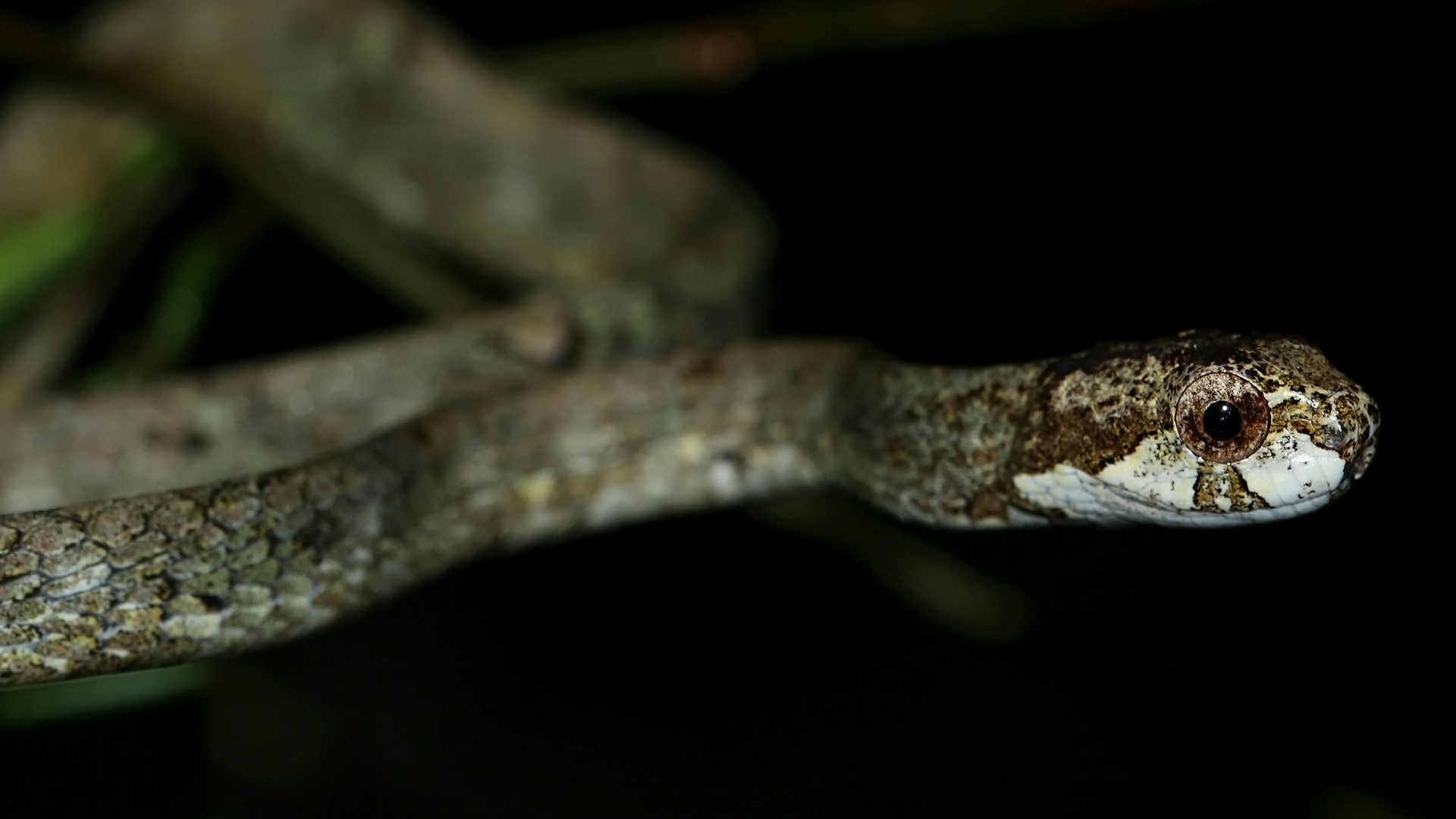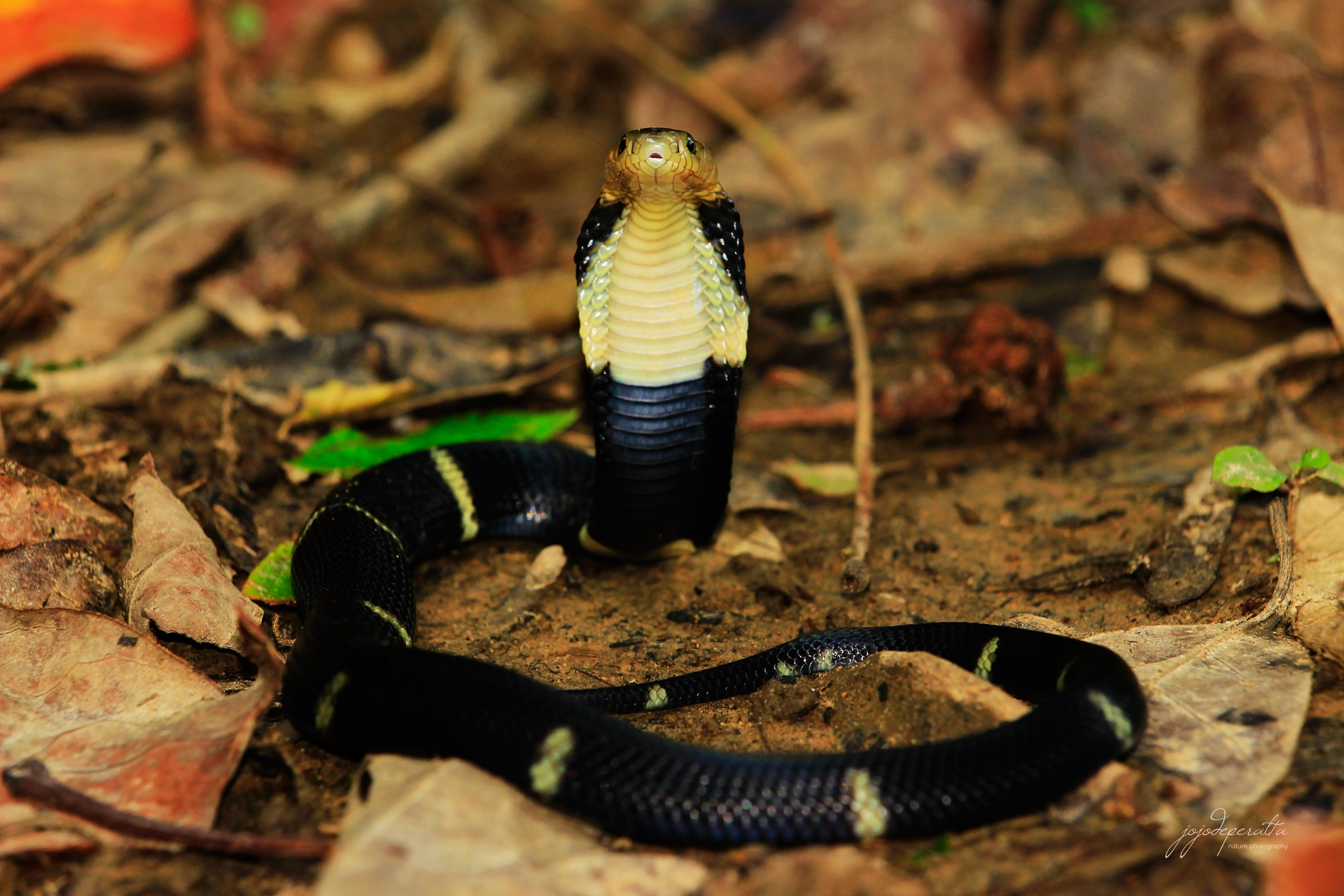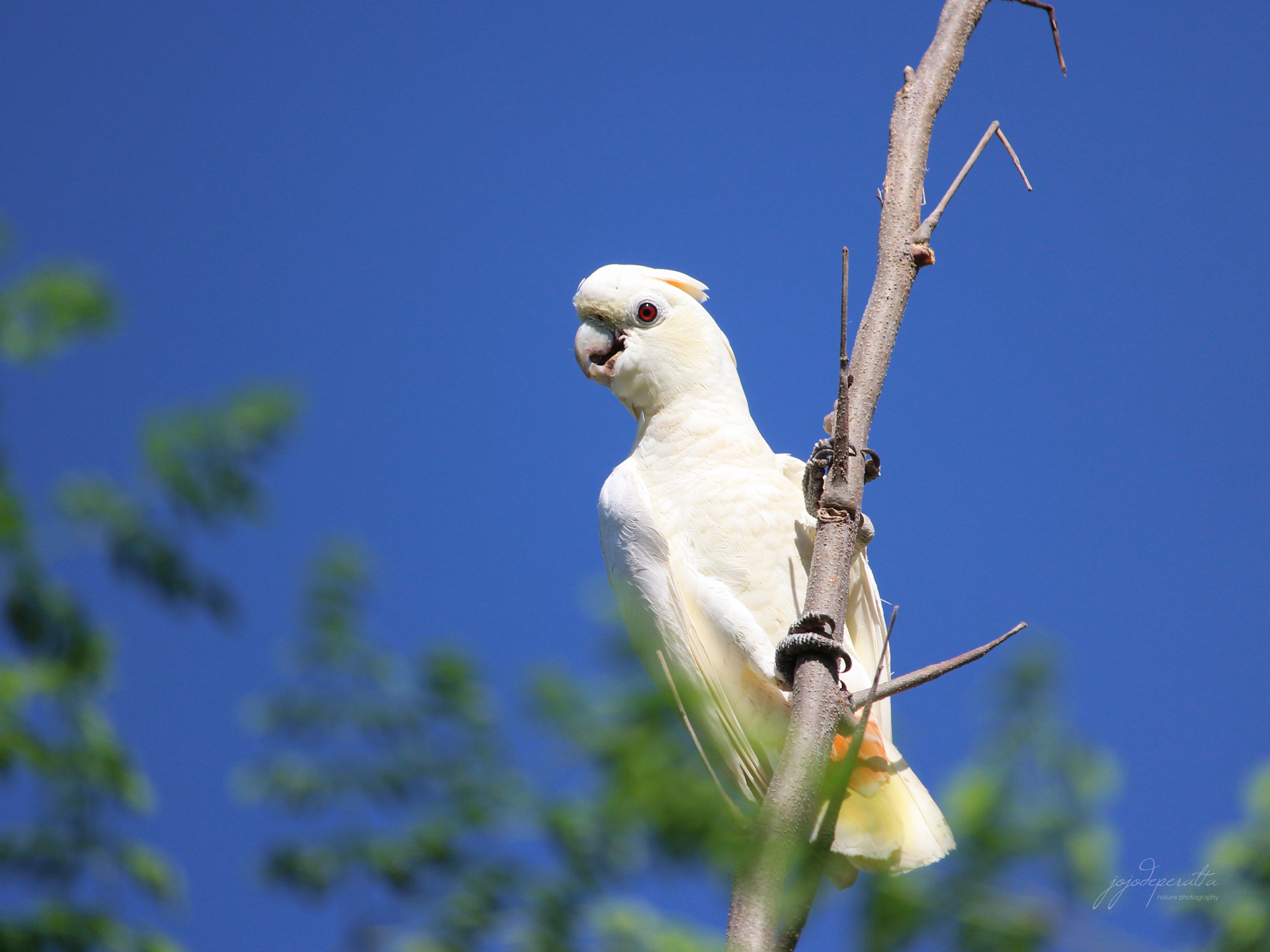Skip to main content
Blunt-headed Slug Snake
The
Blunt-headed Slug Snake, Aplopeltura boa (Boie, 1828) is a small,
arboreal and nocturnal member of Pareatidae that can be found in the
forests of Palawan. Like many pareids, this snake is known to feed on
slugs and snails and it can extract the meat of the snail without
breaking the shell. They have asymmetrical lower jaws that allow them
to pry the soft bodies of snails from their spiral shells. This slow
moving snake is not particularly colorful, but it is beautiful with all
the markings on its short blunt head and big eyes.
 |
| Blunt-headed Slug Snake |
The
Blunt-headed Slug Snake, though uncommon, is widely distributed in the
province of Palawan. This species is a non-venomous snake inhabiting
both lowland and montane moist forests and is typically found perched on
low vegetation. It usually flees when disturbed or threatened, but
sometimes it will coil up tight into a cylindrical shape, keeping its
head hidden in the coils. This snake also occurs in other
Southeast Asian countries like Myanmar, Thailand, Malaysia, Borneo and
Indonesia.











